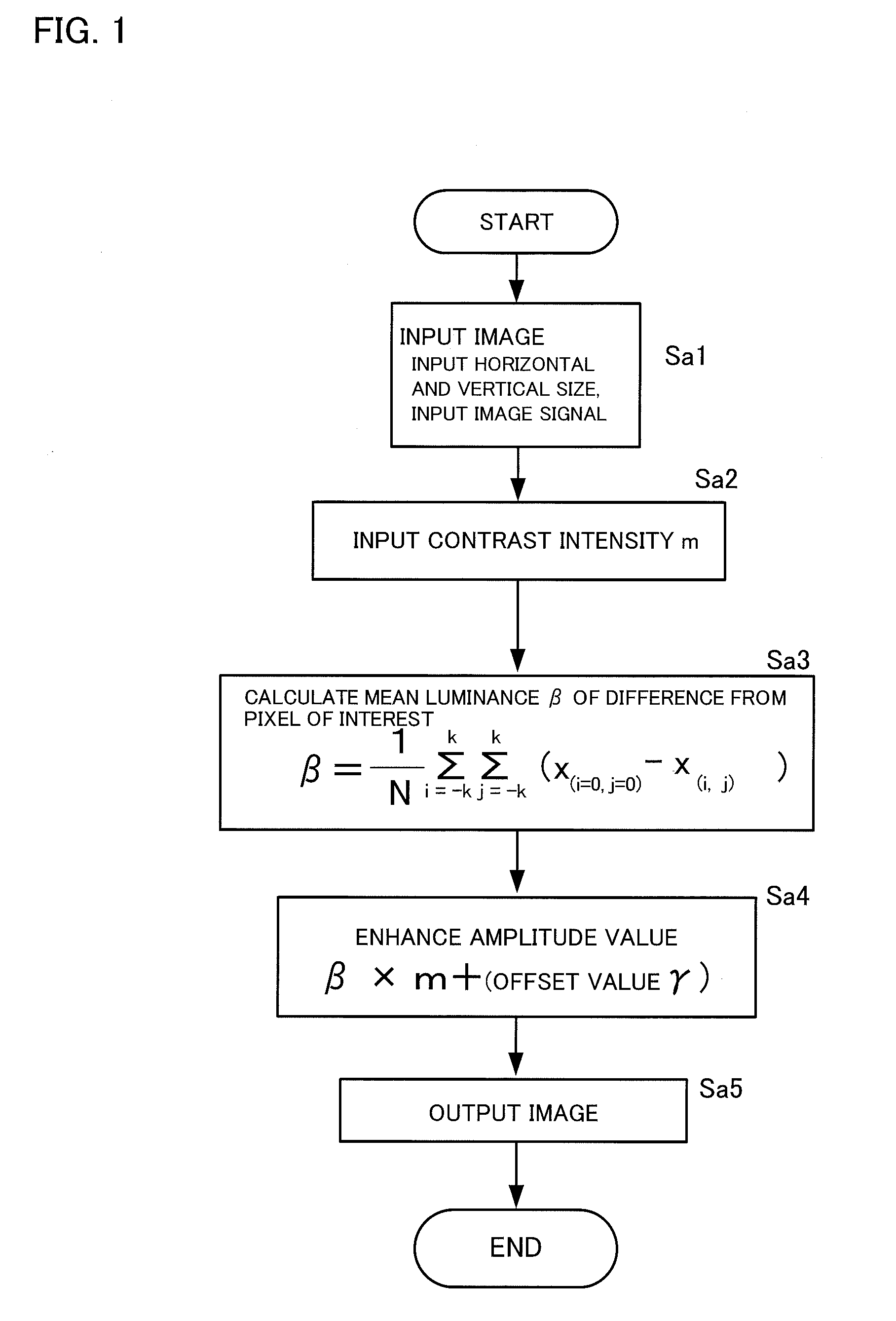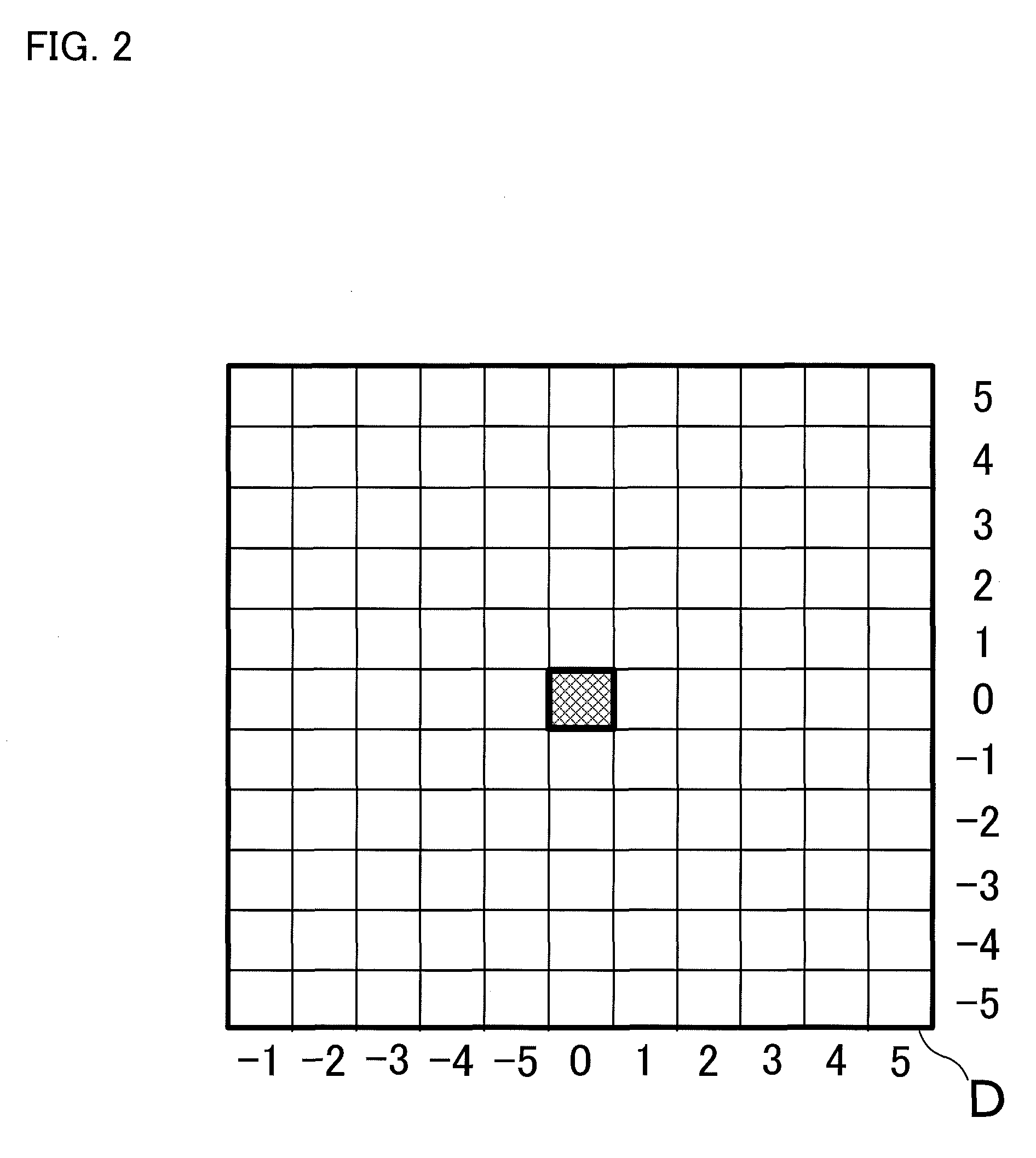Image processing method and computer program
a digital image and computer program technology, applied in the field of digital image processing method and computer program, can solve the problems of not being able to comprehensively solve the problem of mass shadows that are not necessarily so simple as to have various shapes, the interpretation system is nowhere near a practical level, and the physician with sufficient experience may hesitate to make a decision
- Summary
- Abstract
- Description
- Claims
- Application Information
AI Technical Summary
Benefits of technology
Problems solved by technology
Method used
Image
Examples
first embodiment
Extraction Processing of a Characteristic Point Using an Amplitude Value of a Differential Image
[0035]FIG. 1 is a diagram illustrating a procedure of an image processing method according to a first embodiment of the present invention.
[0036]Following a step (Sa1) for inputting data of an input image into a computer, a step (Sa2) for inputting an arbitrarily defined constant m as a contrast intensity is executed. The constant m is a positive constant for defining an intensity of contrast to be assigned to an output image.
[0037]FIG. 2 illustrates a target region D demarcating a closed region (x, y) made up of a plurality of pixels in the input image. In this example, five neighboring pixels of a center (pixel of interest) of the region are set as the target region. If a pixel of interest x (i=0, j=0), then an amplitude value β is defined as expressed in Expression 1.
[0038]β=1N∑i=-55∑j=-55(χ(i=0,j=0)-χ(i,j))(N:numberofpixels)[Expression1]
[0039]Generally, an amplitude value...
second embodiment
Stereoscopic Visualization Processing Using a Gradient Vector
[0048]FIG. 4 is a diagram illustrating a procedure of an image processing method according to a second embodiment of the present invention. Generally, a “gradient vector” is defined as a vector quantity for expressing a differential image having angular information. In the following description, it is assumed that an image signal represents luminance and a value of the image signal represents a luminance value. In addition, for convenience of description, a luminance value is to be expressed in 8 bits or, in other words, is to assume a value ranging from 0 to 255.
[0049]FIG. 5(a) illustrates a target region (mask) C provided in the input image. As an example, the target region C is set to a region of neighboring pixels that are one pixel away from a central pixel. In this case, a luminance value of a central pixel of the target region C is denoted by α and neighboring luminance values of the central pixel are respectively d...
third embodiment
Edge Detection Processing Using a Laplacian Filter
[0067]In this embodiment, a method for performing edge detection by adapting a Laplacian filter to an output image of a conventionally-known iris filter will be described. An object of edge detection is to extract a characteristic portion of an image signal of each pixel included in an input image using a computer and perform so-called “marking” in which the characteristic portion is enclosed by a closed line.
[0068]FIG. 8 is a diagram illustrating a procedure of an image processing method according to a third embodiment of the present invention. Steps (Sc2) to (Sc3) represent a known algorithm referred to as an “iris filter” for obtaining a degree of concentration of an image signal such as a luminance value.
[0069]First, data of an input image is inputted into a computer, a closed region (x, y) made up of a plurality of pixels in the input image is demarcated as a target region C, a gradient vector is obtained from coordinates of a p...
PUM
 Login to View More
Login to View More Abstract
Description
Claims
Application Information
 Login to View More
Login to View More - R&D
- Intellectual Property
- Life Sciences
- Materials
- Tech Scout
- Unparalleled Data Quality
- Higher Quality Content
- 60% Fewer Hallucinations
Browse by: Latest US Patents, China's latest patents, Technical Efficacy Thesaurus, Application Domain, Technology Topic, Popular Technical Reports.
© 2025 PatSnap. All rights reserved.Legal|Privacy policy|Modern Slavery Act Transparency Statement|Sitemap|About US| Contact US: help@patsnap.com



